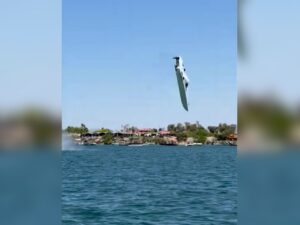It wasn’t all that long ago that Seth and Pauly Shore were hanging out in Hollywood, the latter basking in the glow of successes like Jury Duty, In the Army Now and Bio-Dome.
That last one featured Pauly playing the role of a dimwit, alongside fellow dimwit Stephen Baldwin. The pair accidentally locked themselves inside the Bio-Dome with a group of environmental scientists for one year, and relative hilarity ensued.
Fast forward to 2017, and NASA’s experiment in Hawaii. Six scientists and engineers spent eight months living inside a 1 200-square-foot dome, in order to simulate life on Mars.
The Washington Post reports:
During the simulation, the crew of four men and two women did not leave the dome unless they were in full space suits on biweekly exploratory missions, during which they conducted geological surveys and mapping studies, said the project’s lead investigator, University of Hawaii professor Kim Binsted.
All their communication with the outside world had a 20-minute delay, the time it takes for a signal to reach Earth from Mars, meaning no calls, Skype or turning to Google to answer a quick question. Food and supplies were dropped off at a distance from the dome and retrieved by a robot.

The project, which is the fifth of six NASA-funded studies at the University of Hawaii facility, was designed to better understand the psychological impacts of a long-term space mission on astronauts. Researchers hope the results will help NASA choose individuals best-suited to cope with the isolation and stress of two-to-three year trips to Mars — which the U.S. space agency hopes to begin by the 2030s.
Props to their sacrifice for science, but that didn’t mean NASA was going to play nice. Five of the six members received rejection letters from NASA’s most recent round of astronaut selection whilst they were inside the dome.
Harsh. Here’s the moment they emerged:
Are you an employee looking to make your work a completely conflict-free zone – snowflake friendly, if you will? Maybe some lessons to learn here:
As the Hawaii team went about day-to-day business, including cooking, cleaning and working out, in a shelter roughly the size of a small two-bedroom home, they wore specially designed sensors that measured their voice levels and proximity to other people, allowing researchers to collect data on whether people were arguing or avoiding each other…
“If you put six people together in a stressful situation, there will be conflict,” said [team leader James] Bevington, who will return to the University of New South Wales in Sydney to pursue his PhD after visiting his grandparents in Tennessee. “But the crew was very open with each other about conflict. We realized [sic] it was two people versus the thing in between them, rather than two people against each other.”
In order to pass the time, they played board games and watched movies, with one even learning to play the ukulele. I imagine that would have led to a little conflict, because listening to anyone learn a musical instrument in a confined space sounds like hell to me.
[source:washpost]





